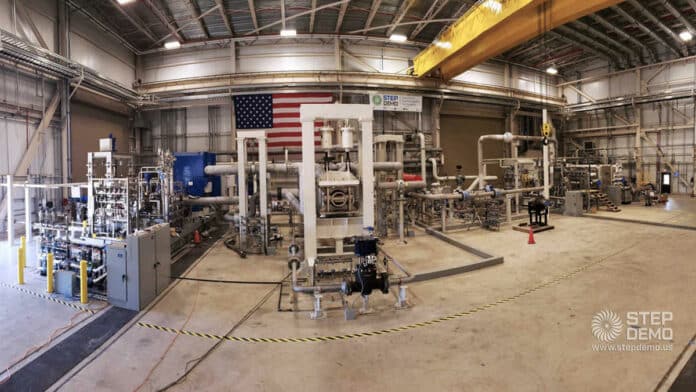Southwest Research Institute, located in San Antonio, is now home to the Supercritical Transformational Electric Power (STEP) Demo pilot plant, which is designed to showcase supercritical carbon dioxide (sCO2) technology. The 15-acre facility houses cutting-edge equipment that will demonstrate and test sCO2 as the working fluid in power system components.
In 2023, the pilot plant achieved its first operation of its compressor with CO2 at supercritical fluid conditions, and commissioning of the facility will continue through early 2024.
The STEP Demo project costs $155 million and is funded by an industry consortium and a $124.5 million cooperative agreement from DOE’s National Energy Technology Laboratory. The system is part of an effort to advance a power generation technology with the potential to produce lower-cost electricity with reduced emissions.
About 60% of all power in North America is generated from fossil fuels, and most power plants in the US are quite old. Many operate below 35% efficiency and emit significant amounts of greenhouse gases.
However, there is hope for more efficient, environmentally friendly power generation with the supercritical CO2 Brayton cycle. This cycle differs from traditional steam Rankine cycles. sCO2 is carbon dioxide held above a critical temperature and pressure, which causes it to act like a gas while having the density of a liquid.
It’s also nontoxic and nonflammable, and its supercritical state makes sCO2 a highly efficient fluid to generate power. Replacing water used in current power plants with sCO2 can increase efficiency by up to 10%.
The STEP Demo facility could potentially address some technical challenges with the commercialization of sCO2 technology. It seems like developing and deploying this technology could be crucial in efficiently using conventional power supplies as we move towards implementing alternatives.
One of the benefits of sCO2 technology is its efficiency as a thermal medium, which means that the STEP turbomachinery could be much smaller than conventional power plant components. This could potentially reduce the environmental footprint and construction cost of any new facilities. The new STEP Demo facility will be significantly smaller than today’s power plants. For example, a desk-sized sCO2 turbine could power 10,000 homes.
The STEP Demo project has some specific objectives, such as refining the sCO2 power cycle, demonstrating component performance and scalability, and designing the facility to accommodate multiple new supporting technologies.
Once the STEP Demo facility is completed, SwRI researchers will be working hard to advance the technology for commercial adoption. They will also focus on refining the sCO2 power cycle and demonstrating the machinery’s scalability and performance ability.
The plant has been designed to provide on-site user training as well as operational experience, which will help commercialize this technology. Moreover, the facility has been designed to adapt to industry changes and provide educational and research advantages. SwRI researchers strive to make this technology commercially viable, refining the sCO2 power cycle while demonstrating the machinery’s scalability and performance ability.
